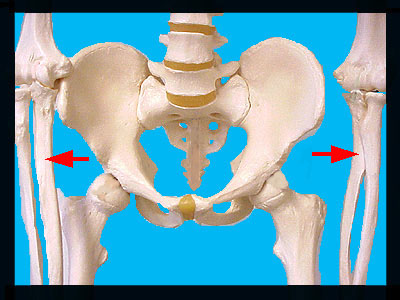|
|
||||||||||||||||||||||||||||||||||||||||||||||||||||||||||||||||||||||||||||||||||||||||||||||||||||||||||||||||||||||||||||||||||||||||||||||
|
This image shows a portion of the pelvic girdle with each ulna (indicated by the red arrows) attached at its proximal end to a humerus. The most conspicuous feature of the ulna is its proximal articulating surface - the trochlear or semilunar notch. The olecranon process arises from the posterior surface of the notch. The coronoid process is the other major process on the proximal end of the ulna. The olecranon and coronoid processes and the trochlear notch of the ulna articulate with the trochlea of the humerus to form a hinge joint that permits flexion and extension at the elbow. The head of the radius articulates on the lateral side of the ulna just inferior to the semilunar notch. This articulating surface on the ulna is termed the radial notch. This articulation is classified as a pivot joint and allows for pronation and supination of the hand. At the distal end of the ulna is the head and the styloid process. |
|
